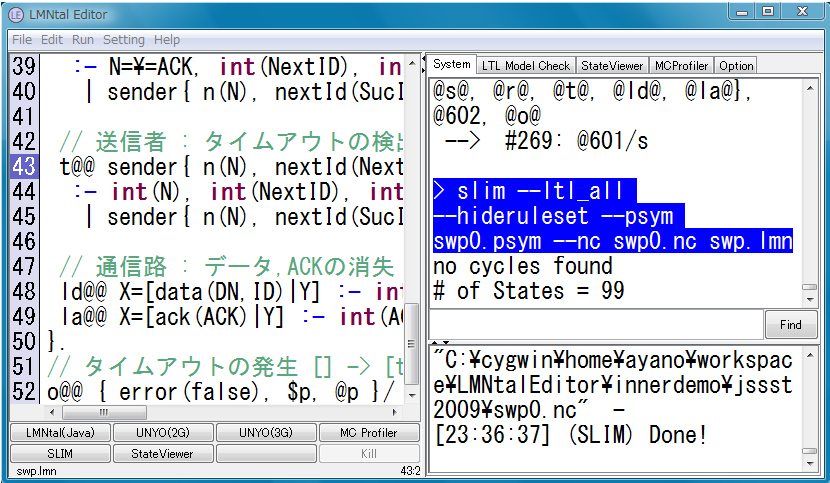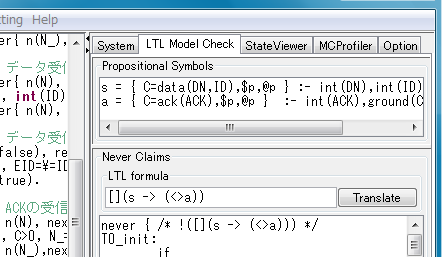LaViT: LMNtal Visual Tools †
The LaViT IDE should be quite easy to use.

The upper-left pane is for
editing programs, while the upper-right pane shows system output.
To run your program, use one of the buttons on the lower-left pane:
- Compile:
- Invoke the LMNtal compiler to generate intermediate code.
- SLIM:
- Run the program (LMNtal source or intermediate code) using the SLIM runtime.
- UNYO & Graphene:
- Invoke the UNYO-UNYO visualizer (using the Java runtime) and Graphene
- StateViewer:
- Visualize the state-space of the program. StateViewer internally runs SLIM with the --nd (nondeterministic execution) option.
To model-check your program, click the LTL model check tab of the upper-right pane,

and proceed as follows:
- Define propositional symbols that represent properties of states (using the syntax of the left-hand sides of rewrite rules).
- Specify an LTL formula representing the property you wish to check.
- Press the Translate button to compile the formula to a Buchi automaton.
- Press the slim --ltl (or slim --ltl-all or LTL StateViewer) button to check the specified property.
Examples of propositional symbols and LTL formulas can be found by opening the programs under the demo/ltl directory of the distribution.
You can save and load the set of propositional symbols and a LTL formula (that can be numbered from 0 to 9) using the "LTL File" feature on the lower-right.
For further details, see LaViT (in Japanese).
LMNtal Java †
The old page describing the use of LMNtal Java has been moved.
See How to Use LMNtal Java for details.
![[PukiWiki] [PukiWiki]](lmntal_220x80.png)
![[PukiWiki] [PukiWiki]](lmntal_220x80.png)